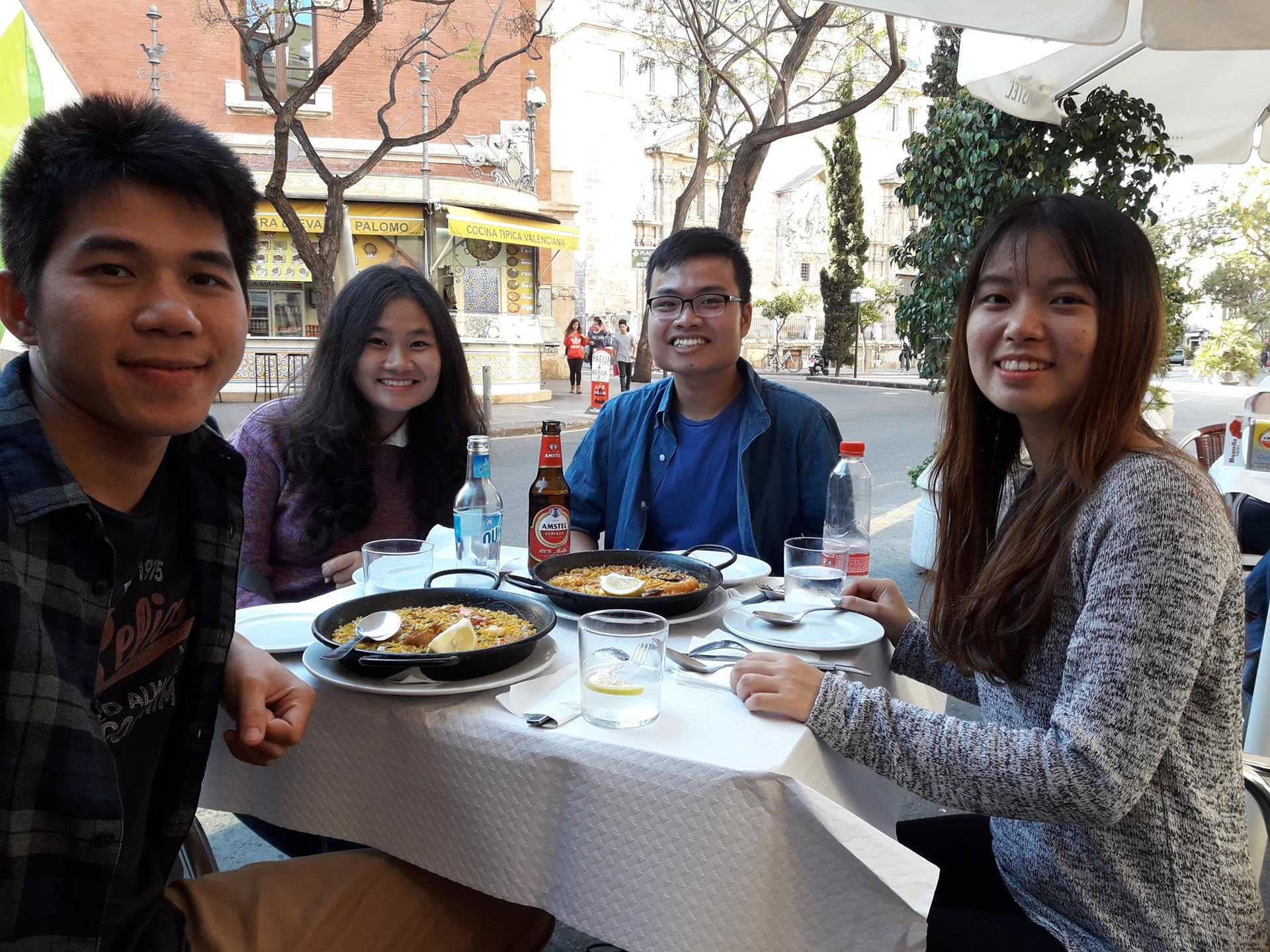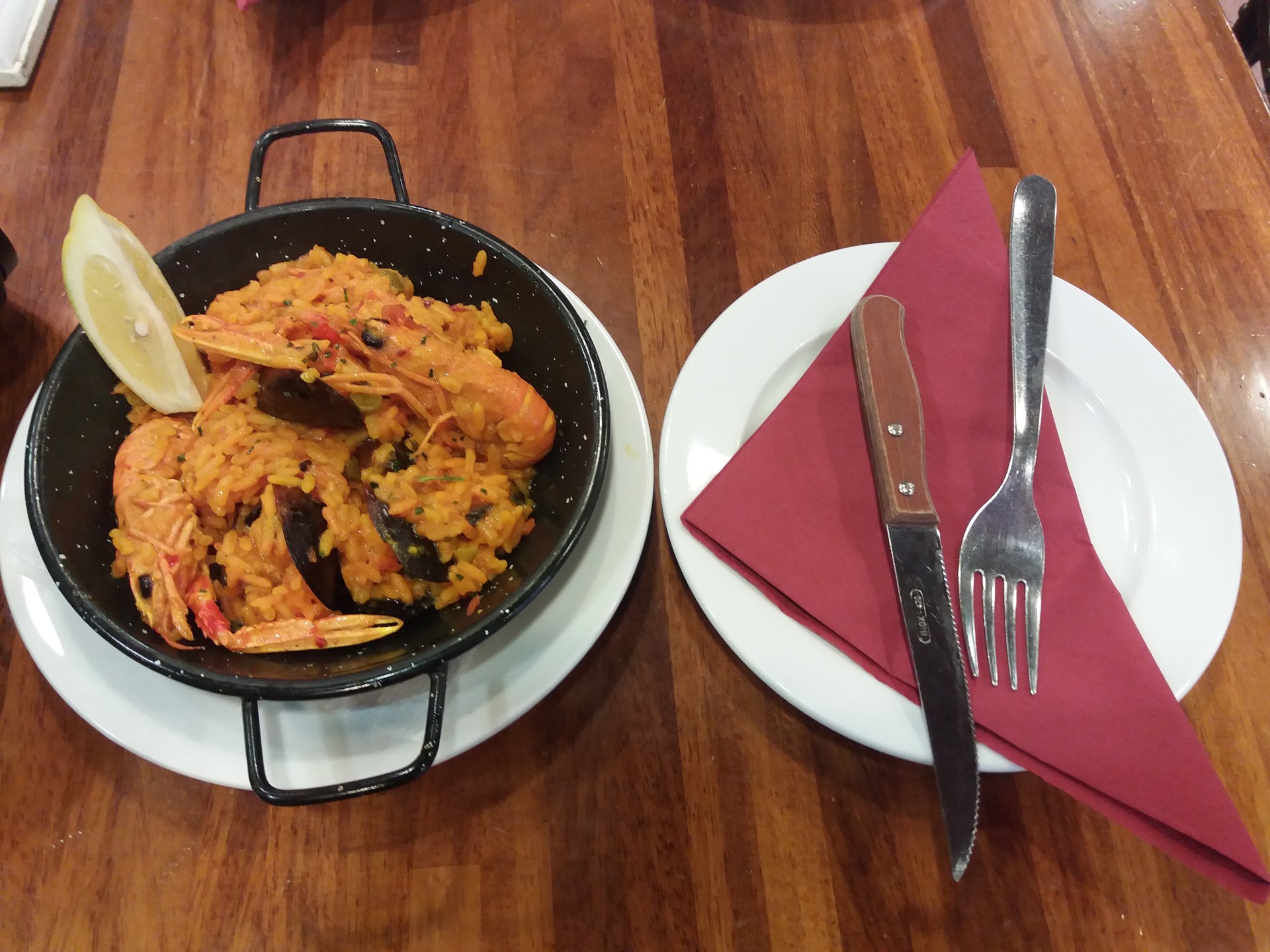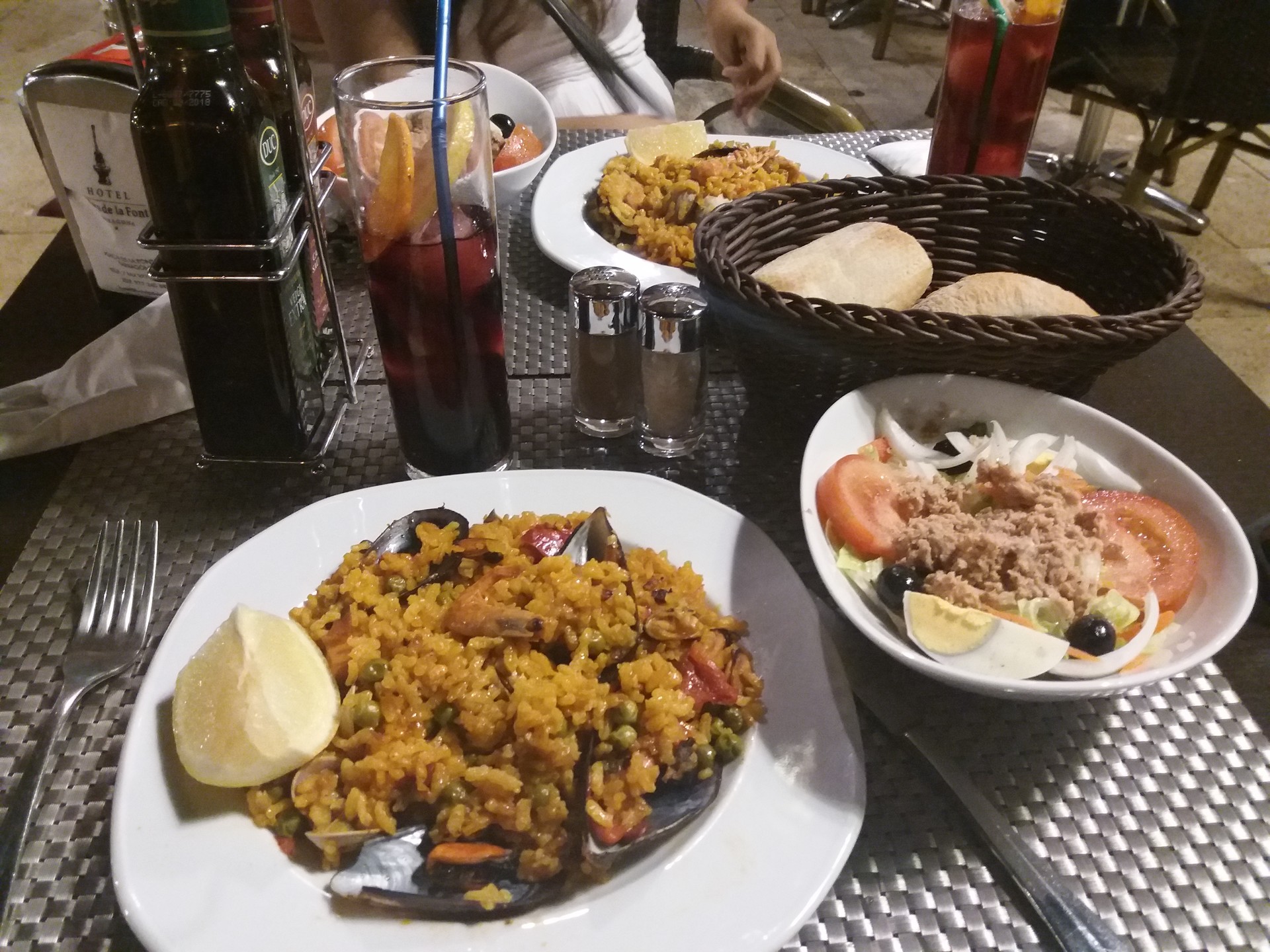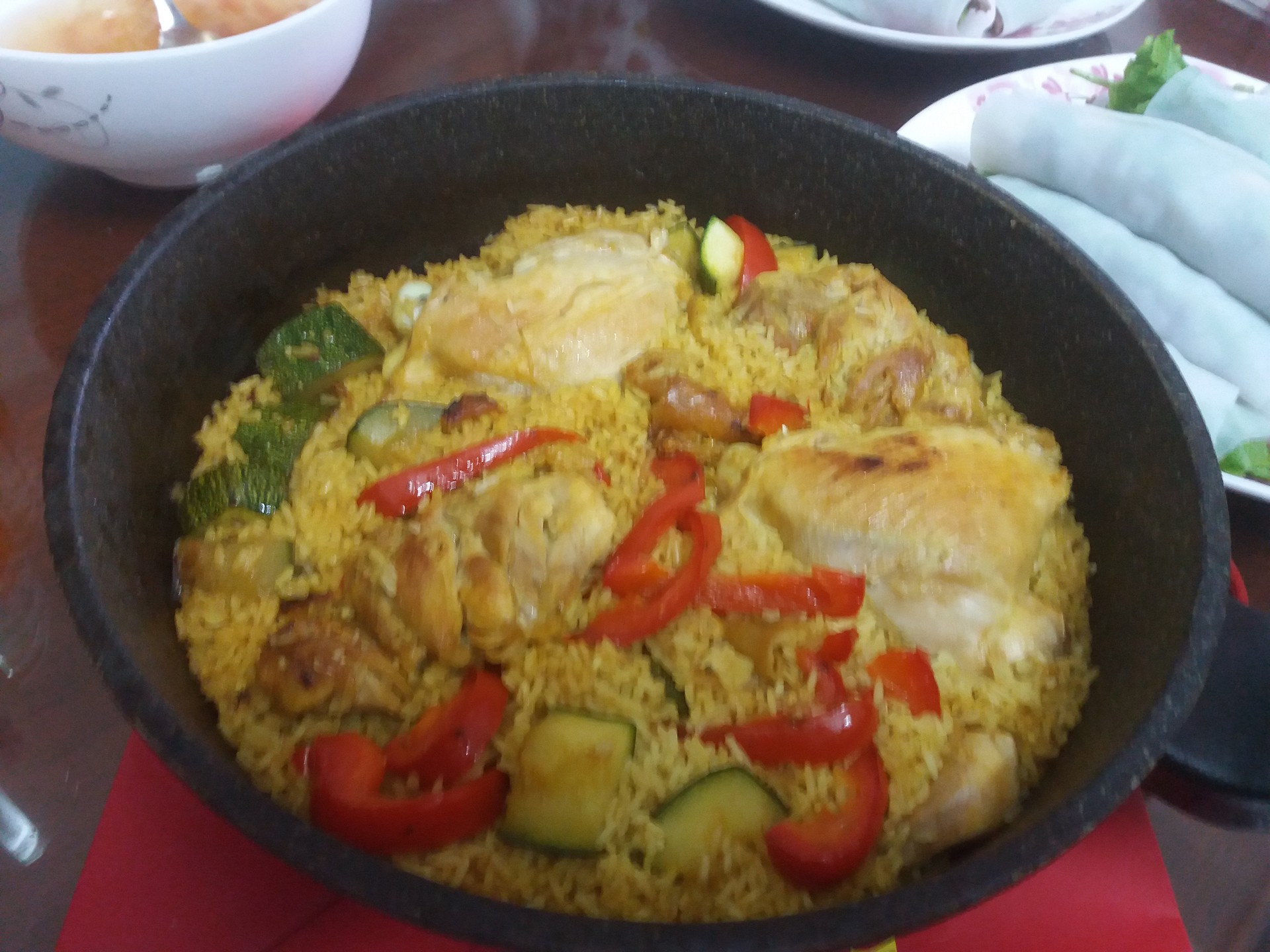Paella (1) Introduction
After staying 10 months in Spain, when I have come back to Vietnam, if someone asked me:
Hey, Does Spain have special foods!
I would immediately rely:
It's paella and Jamon meat.
Although I find Spain has a lot of excellent food, but when it comes to gourmet cuisine, I immediately think of the paella. It is fortunate for me to have tried paella in some restaurants, eateries in Spain including: Valencia, Madrid, Granada, Servilla and Cordoba.
Firstly, I would like to share with your guys a fact. There is a fact that is my expectation about Europe as the land covered in ice and snow during the winter. The sun in Europe is not as shining as the sun in tropical country such as Vietnam.
But.. I was wrong with Spain.
To tell the truth, I was surprised because in Tarragona there was no snow, I always thought that snow would be everywhere in Europe until I was doing Erasmus in Spain. I find Spain has a climate not as harsh and cold as most other European countries, while I personally believe that a lot of sun shining has given Spanish people a vibrant lifestyle and youthful festivals.
Personally, I find the Spanish cuisine also has many tropical-colored dishes that are typically paella fried rice by its eye-catching colors, rich flavors, and varied ingredients. Rice is fried in wide pan, not need to eat just look at customers were fascinated by the attractive yellow color of saffron flour and colors of many materials.
The ingredient content of paella fried rice is richer, richer than that of Vietnamese or Chinese fried rice. Moreover, it may be seafood combined with meat, usually chicken and vegetables. Spanish people say that feudalism in this country hundreds of years ago, after court feasts, the servants often regret the delicious food left over so mix them all together, put in a pan big and brought home to eat. This tiger dish is called "baqiyah", which is often called paella. Yet some linguists claim that the name of the dish derives from the name of the pan in Latin "patella".
My friend told me that paella was born in Valencia. That is also the reason that I went to Valencia to eat paella for the first time. Here, after seeing the vast land of cultivating agriculture products in Valencia, I think maybe because of hard working farm life, farmers often cook lunches with any food that can be found on a plate or vegetable. Then, they mixed the food into white rice, cooked in a large pan over large flames to make the dish smoky and fragrant.
So, on special days, or when having some fun, they add rabbit or chicken meat to the delicious rice dish. And so we have paella.
Today paella is present everywhere in Spain as well as Spanish speaking countries. I come to any city of bullfighting, almost in any restaurant; guests will be introduced to a separate menu for paella.
What's more, I find that paella is also well known for its richness in processed ingredients, in addition to chicken, pork, seafood, beans, black pepper, artichoke or anything else. Can be combined with the rice that the person who mixes it. There are basically three main types:
Traditional Paella of Valencia includes white rice, greens, rabbit or chicken or duck, snails, beans and spices.
Paella seafood includes seafood such as shrimp, fish, squid ... but no beans and green vegetables.
Last but not least, Paella mixed with seafood and meat, green vegetables, sometimes adding beans and other ingredients as you like.
In spicy condiments, I know that there is special need for expensive azafran, in addition to olive oil, rosemary, chilli and ginger. And yet, Spanish chefs say that in order to make a good paella, it is necessary to cook with a new fire of fire that makes the food hot and gives a natural scent; must use a traditional pan with a flat bottom, wide mouth, with handle; Must use the Bomba or Medium-Grain rice of Valencia because only these types of rice ensure softness, sweetness, flexibility and spice.
My first time trying Paella in Spain - Valencia

I remember when I first tried paella fried rice; it was a very interesting experience because it was not like Vietnamese style rice.
I find paella rice not crispy, spongy like Vietnam fried rice but spongy and have slightly crunchy, slightly wet rice, soft and smooth by the amount of water used and the smell of the aroma added to the process of roasting rice.

My seafood paella in Barcelona!

My Paella in Tarragona!
Okay, I think that is enough for paella introduction, next I will tell your guys about my story or perhaps our story ( Vietnamese students in URV) learned to make paella.
Hope you enjoy my writing, and continue reading my next story of paella.
It will come soon.
P/s. Here is the photo of my home-made paella

Photo gallery
Want to have your own Erasmus blog?
If you are experiencing living abroad, you're an avid traveller or want to promote the city where you live... create your own blog and share your adventures!
I want to create my Erasmus blog! →



















Comments (2 comments)
Good!
good!